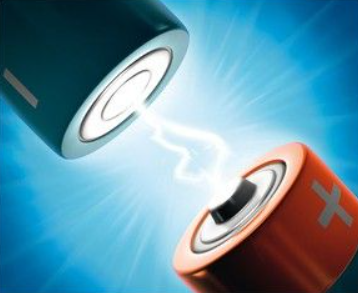Contemporary energy storage companies are harnessing new technologies to improve and establish energy storage facilities to meet an ever-growing demand for clean energy. These efforts are making a remarkable impact on the future of energy generation and storage.
The problem is that current clean energy storage technology is not advanced enough nor cheap enough to be used at scale. Yet grid-scale energy storage is vital to meeting the target of Net Zero Emissions by 2050.
A study performed by Navigant Research indicates that the global market for utility-scale energy storage will reach $15.6 billion by 2024. In 2016 the market hovered at $675 million annually. This is a remarkable increase for a relatively new technology like energy storage.
Thankfully, there are some great innovative companies working on better energy storage solutions. In this article we cover the top energy storage companies, and the technology they use.
Let’s dive right in!
Energy Storage: Problems and Potential
Developing new energy storage solutions for green energy is a daunting task that is oftentimes met with problems mostly related to supply and demand.
In essence, an estimated 56% to 67% of the energy that goes into fossil fuel power plants is lost in the conversion process.
Energy derived from fossil fuels is easily generated and regulated to meet demand. The more energy that is required, the higher the production at those peak times.
The same cannot be said for green energy from solar or wind which are intermittent generation sources. These renewables do not depend on heat, so they do not lose energy yet the efficiency of our technology to harness clean energy is lacking.
During a sunny day or windy period, excess energy from these renewable energy sources must be stored to meet the demand during non-energy generating times. Storing energy is not impossible but it is still very expensive.
It is estimated that solar panels are about 18% to 25% efficient. More efficient solar panels are required to generate more electricity which will save on materials and land area. On the other hand, hydropower is estimated to be about 90% efficient.
The ideal is for renewable energy storage to meet power demands in periods where little or no input from renewable energy sources is available. Currently, the intermittency of clean energy generation affects both the storage rate and storage volume which is a pressing issue.
Solving the intermittent energy generation issue and increasing the supply of renewable energy is key. Check out this video by Vox:
[embedyt] https://www.youtube.com/watch?v=z-k5uS7ALXk[/embedyt]
Renewable energy sources typically generate electricity from natural phenomena that include solar, wind, hydro, biological processes, and geothermal heat flows.
Solar and wind are our primary sources of renewable energy. However, our current renewable energy storage capacity indicates that our reliance on fossil fuels will remain for the foreseeable future. This is largely due to insufficient storage capacity and an increasing demand for clean energy.
Experts agree that a multifaceted portfolio of renewables is the most rational approach to creating reliant clean energy generation and storage. Wind and solar energy are created at high levels, at different times of the day. These sources can then be supported by other energy sources to secure a constant flow of energy for storage.
Thanks to innovative technologies, energy storage using large-scale, lithium-ion batteries is approximately 86% efficient.
However, researchers suggest that only by 2050 will the United States be able to provide 94% of electricity from renewable sources.
Simply put, energy storage solutions maximize the utility of renewable energy, making it truly sustainable. Finding the right energy storage solution for different applications has the potential to make renewable energy profitable for enterprises and affordable for consumers.
Investing in energy storage companies’ stock appears to be a lucrative investment. This is largely due to accelerated efforts to decarbonize power markets through battery storage facilities which has resulted in increased demand for renewable energy storage solutions.
Energy Storage Technologies
Electricity cannot itself be stored on any scale. However, electricity can be converted to other forms of energy which can be stored and later converted to electricity on demand.
The idea behind energy storage is always to have sufficient energy to meet demand. There are three prominent energy storage technologies, namely, pumped hydro storage, mechanical storage, and battery storage.
Thermal energy storage (TES) is another energy storage technology that helps to integrate renewable energy into power generation. TES technologies include molten-salt storage and solid-state and liquid-air variants.
1. Pumped Hydro Storage
Pumped hydro is a mature and safe technology that is the most widely used type of energy storage.
A typical pumped hydro project will have water pumped to an elevated reservoir using electrical pumps when energy demand is low. This stored water is released through turbines, which generate hydroelectricity to meet increased demand at peak times.
The Bath County Pumped Storage Station in Virginia U.S. has a net generating capacity of 3,003-megawatts.
2. Mechanical Storage
Mechanical storage takes several different forms. Some projects use flywheels, which store rotational energy that is released for a short duration, typically to bridge a break in energy supply.
Another common type of mechanical storage is the use of compressed air. Electrical compressors are run while electricity is readily available, and the compressed air is driven through turbines to create electricity when needed.
The city of Fresno, California has flywheel storage power plants built by Amber Kinetics to store solar energy. There is a 110 MW compressed air facility in McIntosh, Alabama and a 290 MW compressed air facility in Huntorf, Germany.
3. Battery Storage
Batteries store and release energy electrochemically and require high energy density, high power, long life, and safety, and should be cost-effective. Battery technology has evolved to such a degree that battery electric storage is now incorporated into large-scale energy storage.
Lithium-ion batteries are the most popular batteries for a range of applications. These include residential and larger systems capable of supporting an entire electricity grid.
Emerging technologies, such as flow batteries, function by pumping liquid materials that interact across a membrane and also hold promise.
Flow batteries are less energy-dense than solid-state batteries, but they hold a charge for longer. In addition, flow batteries have a reduced risk of degradation over time.
Battery energy storage is a viable storage method as they are able to store energy long term rather than offer an alternative way to generate energy.
It is important to mention that besides battery storage being expensive, they are bulky, prone to changes in temperature, and require ongoing support to ensure that their charge level is consistently regulated.
The Wheatridge Renewable Energy Facility is the first utility-scale development in Oregon, U.S. to implement wind and solar generation with battery storage. This partnership between NextEra Energy Resources and Portland General Electric has the potential of powering 100,000 homes with clean, reliable energy.
Energy Storage Potential: The Benefits of Improved Energy Storage Solutions
Energy storage systems help to balance the supply and demand of energy, particularly from renewable energy projects. This promotes more efficient, flexible, and dependable energy generation.
The benefits of energy storage include:
- Reduced cost to consumers.
- Greater energy reliability.
- Decreased strain on the grid.
- Integration of renewable energy sources.
- Reduced footprint.
- Scalable.
- Environmental due to zero emissions.
7 Most Innovative Energy Storage Companies to Watch
Listed below are 7 top energy storage companies that have made great strides in energy storage capability.
These top energy storage companies 2023 are among many global leaders providing energy storage solutions:
1. Fluence
Fluence was established by Siemens and AES, both industry powerhouses in energy storage. Fluence’s energy storage systems are designed for common use cases and are also customizable for more specific applications.

Established: January 2018
Location: Virginia, U.S.A.
Energy Storage Technology Used: Fluence Energy utilizes advanced battery storage technologies, including high-capacity lithium-ion batteries and sophisticated energy management systems.
Gridstack is their grid-scale industrial-strength energy storage product that enables flexible peaking capacity, frequency regulation, renewable integration, and much more.
Sunstack, in conjunction with integrated technologies, stores solar energy by optimizing solar capture and delivery.
Website: https://fluenceenergy.com/
2. NextEra Energy
NextEra Energy has more than 180 MW of battery energy storage systems in operation and has more energy storage capacity than any other company in the U.S.
With $135 billion in total assets, NextEra Energy is the world leader in electricity generated from wind and solar.
In its first year, the company, previously known as Florida Power & Light Company, served approximately 76,000 customers in 58 communities and had a generating capacity of 70 MW.
Their first nuclear power reactor at Turkey Point, Florida, started generating electric energy in 1972.

Established: Florida Power & Light Company (FPL), was created on Dec. 28, 1925, and became NextEra Energy in 2010.
Location: Florida U.S.A.
Energy Storage Technologies Used: NextEra Energy storage solution uses lithium-ion battery banks at their various facilities across the U.S. The company focuses intensely on continued investments and innovation in wind, solar, storage, and green hydrogen projects.
Their Zero Carbon Blueprint outlines their goal to eliminate carbon emissions by no later than 2045. This is the most ambitious target set by any U.S. utility or power generator.
The Wheatridge Renewable Energy Project is a prime example of technological advancements with battery storage capable of providing reliable, sustainable energy. The renewable energy plant includes:
- 300 MW wind capacity via 120 GE turbines
- A 50 MW photovoltaic solar energy generating facility
- A 30 MW battery storage facility
Website: https://www.nexteraenergy.com/
3. Form Energy
Form Energy is composed of a team of specialists tasked to tackle the challenge of climate change through low-cost multi-day energy storage.
They are supported by leading investors who share a common belief that low-cost, multi-day energy storage is a key to a reliable, secure, fully renewable electric grid.
Formware is their next-generation operational model for power grids that has the ability to capture real-world weather variability. This results in more reliable and cost-effective designs for renewables-driven power systems.

Established: 2017
Location: Somerville, Massachusetts, U.S.A.
Energy Storage Technologies Used: Form Energy reinvented and optimized the multi-day ion-air battery for the electric grid. Iron, water, and air constitute the active components of the ion-air battery system.
The battery stores electricity for 100 hours at minimum system costs and is competitive with legacy power plants. It is inexpensive, safety-compliant, sustainable, durable, and scalable.
The multi-day iron-air battery is a sustainable form of reversible rusting. While discharging, the battery breathes in oxygen from the air and converts iron metal to rust. While charging, the application of an electrical current converts the rust back to iron, and the battery breathes out oxygen.
Website: https://formenergy.com/
4. Energy Vault
Energy Vault specializes in energy storage for varying duration power needs including their gravity and kinetic energy-based, long-duration energy storage products as well as hydrogen technologies.

Established: 2017
Location: Lugano, Switzerland
Energy Storage Technologies Used: Energy Vault’s primary product is a gravity battery using a multi-headed crane to store energy. Their utility-scale energy storage solution is supported by an integrated platform using EVS technology-agnostic energy management system software.
The gravity feed storage system design encompasses stacking heavy blocks made of composite material into a tower. This captures potential energy in the elevation gain of the blocks.
When the demand for electricity is high, the crane lowers these blocks to the ground. The motors function as generators and deliver electricity to the grid.
Website: https://www.energyvault.com/
5. Sonnen, Inc
Sonnen, Inc. is a wholly-owned subsidiary of Shell Overseas Investments B.V.
Founders Christoph Ostermann and Torsten Stiefenhofer developed the first sonnenBatterie designed for domestic energy storage. Sonnen has offices in Germany, Italy, England, the United States, and Australia.

Established: 2010
Location: Wildpoldsried, Germany
Energy Storage Technologies Used: Sonnen creates smart domestic-use batteries for renewable solar energy storage. The batteries are used to power homes on a routine or emergency basis.
Their three primary product lines include Evo for outdoor installation, Core+ for indoor installation, and ecoLinx, which integrates with smart home automation. The Sonnen app allows clients to manage their power usage.
Website: https://sonnenusa.com/en/
6. Powin
Powin is a high-quality, high-volume contract manufacturing company with a large supplier network and relationship base in Asia and North America.
Their primary focus is on the sustainable transformation of the aging and outdated electric grid. This is achieved through increased renewables penetration, non-wires alternatives, and power decentralization.

Established: 1989
Location: Oregon, U.S.A.
Energy Storage Technologies Used: Powin sells products for energy storage, including a modular battery system, battery management software, and a power conversion system.
Powin manages every step of its supply chain, from material sourcing to on-site installations.
The company engineered and installed photovoltaic, primary frequency response, and hybrid grid facilities globally. Powin’s energy storage systems are used in utility-scale, commercial, industrial, and microgrid applications.
Website: https://powin.com/
7. AES Corporation
AES Corporation is a Fortune 500 global power company that operates on four continents.
Applied Energy Services (AES) is a world leader in lithium-ion-based energy storage, both through their projects business and joint venture Fluence. The company’s contributions to energy storage have enabled hundreds of utilities worldwide to reduce their reliance on thermal generation.

Established: 1981
Location: Arlington, Virginia, U.S.A.
Energy Storage Technologies Used: AES pioneered lithium-ion-based energy storage technology more than a decade ago. Currently, almost half of all new projects include a storage component.
AES also offers smart grid infrastructure and digital solutions, which are key catalysts for energy transition. This includes additional transmission capacity needed to support renewables adoption and batteries tied to transmission.
The AES global x local approach delivers greener energy solutions in a way that makes the best sense for each community. The concept is simple – Expanding local knowledge and experience to a global scale.
Website: https://www.aes.com/
Conclusion
In conclusion, our energy storage capacity is growing exponentially. Thanks to the innovation and dedication of many leading energy storage companies, climate change can be mitigated.
Energy storage technologies are being integrated into effective and safe storage facilities. These facilities are steadily reducing our reliance on fossil fuel energy generation.
Many governments are streamlining and passing policies to speed up renewable energy efforts. This collaboration with the energy sector contributes greatly to developing and expanding existing energy storage capacity.
Energy storage is the future of renewable energy and is the best solution to becoming independent of fossil fuel energy generation.
Frequently Asked Questions
References
Video: How to fix clean energy’s storage problem
FASKEN: Energy in Transition: Emerging Issues in Energy Storage – Unlocking the Next Wave
LCP Powering Possibility: Is battery storage a good investment opportunity?
World Nuclear Association: Electricity and Energy Storage
IRENA: Energy Storage






